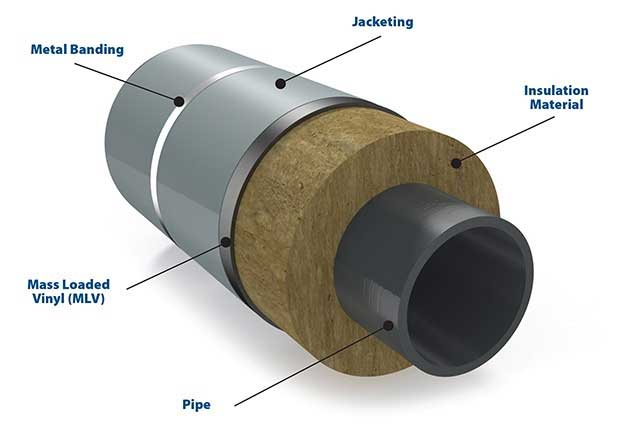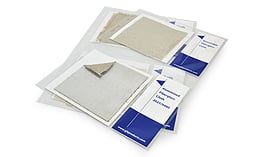Millions of miles of piping exist across the landscape of the United States. These pipe lines move liquids, gases and other industrial products from point A to point B. The movement of this material is critical to the success of industry. It can, however, create unwanted noise that may be required to be contained. Noise containment can be achieved by properly installing acoustical insulation and related insulation protection components.
The four components required for the containment of unwanted noise produced by in service pipe lines are as follows:
Insulation material: The first component needed for the containment of noise is the insulation material. Most insulation materials used over in-service pipe lines first serve a thermal function. If sole use is for acoustical applications, NRC or STC values should be considered. Thermal insulation products will adequately absorb or refract acoustical energy. Fiberglass, mineral wool and open cell foam are the most commonly used types of acoustical insulation.
Acoustical Barrier: The second component used in noise containment of pipes is an acoustic barrier. The barrier most commonly used is known as mass loaded vinyl or MLV. MLV is a non toxic, lead alternative, made from vinyl, for flexibility, and commonly Barium Sulfate for its high relative density. MLV is used to block the transmission of sound waves. The coupling of insulation and MLV is critical to the success of containing noise. MLV is available in a variety of densities and facings.
Protective layer: Most often the pipe lines requiring noise containment are found outdoors. Pipe insulation and MLV needs to be protected from harsh environmental realities. Most often insulated pipes are covered with Aluminum, Stainless Steel or PVC. These cladding types are cut to size to fit over insulated pipe. All are available in a variety of thicknesses, colors or treatments.
Fastening devices: Cladding products must be fit to allow for the possibilities of expansion and contraction. A variety of fastening devices can be used to hold the cladding material in place. Banding and seal types are made from aluminum, stainless steel, galvanized steel and polypropylene. Metal cladding may also be fastened with screws or rivets. PVC cladding may be held together with adhesive and caulk.
Custom products are available for noise abatement. These are usually a combination of materials which promote ease of application. Want to learn more about Acoustical Lagging Solutions for pipes? Download our free Acoustical Insulation for Lagging Applications Guide.


